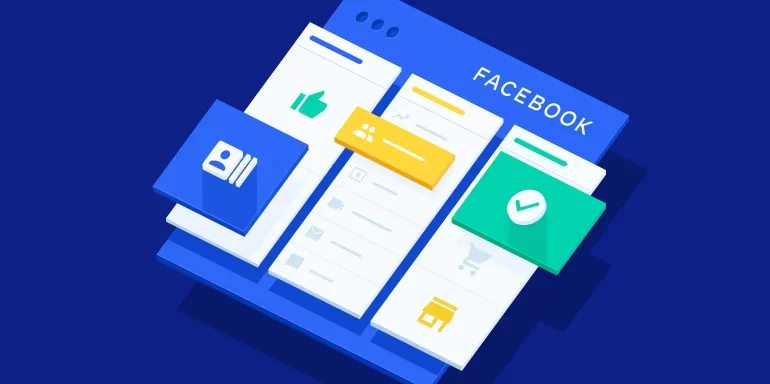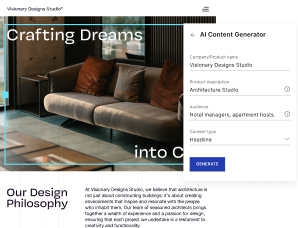Facebook Ads is always looking to develop new ways for brands to improve their metrics and grow their success, whatever that may look like.
In fact, the average Facebook Ad conversion rate across all industries (9.21%) is more than double Google’s average search conversion rate (4.40%):
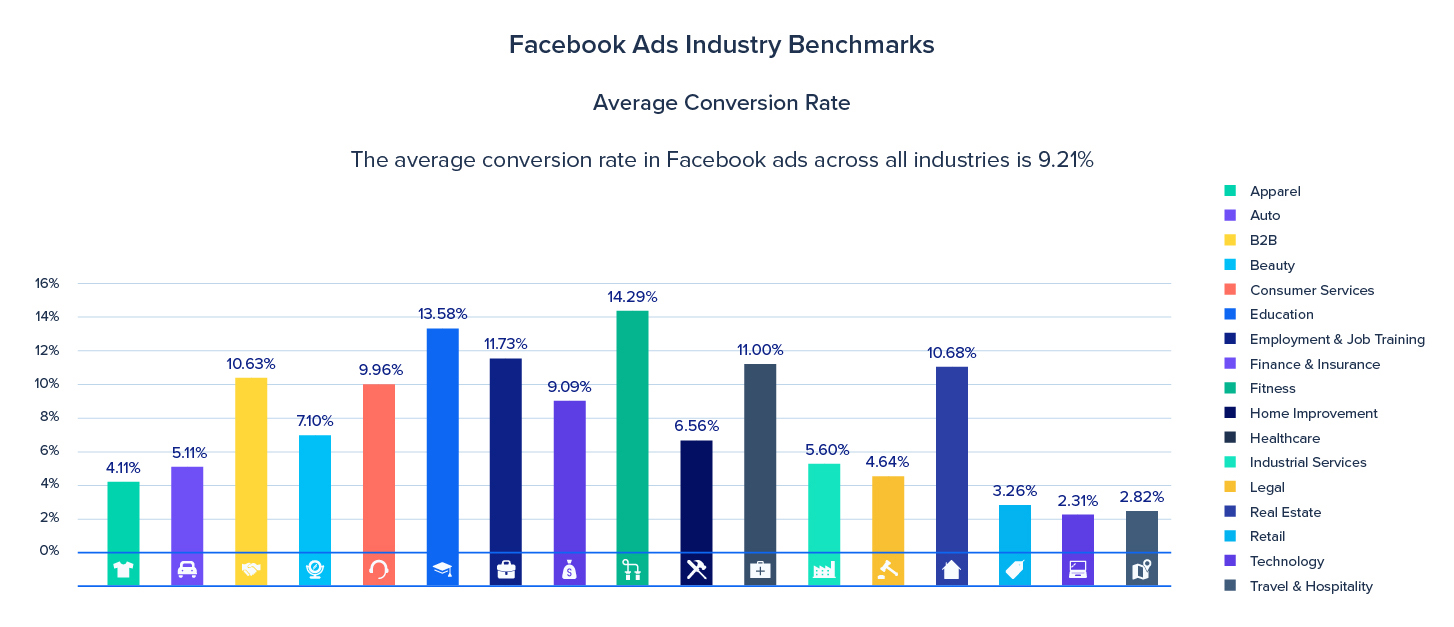
Yet, as with any platform, there’s always room for improvement — especially in those industries with below average rates, like apparel (4.11%), retail (3.26%), technology (2.31%), and travel & hospitality (2.82%).
That’s why it makes perfect sense for businesses to take advantage of Facebook’s unique ad formats, targeting options, and ad objectives. Specifically, the conversion optimization objective.
What are Facebook conversion ads?
Any Facebook ad with the website conversion objective is considered a Facebook conversion ad. Whether your goal is page visits, sales, video views, or another action to help grow online business, Facebook website conversion ads encourage potential customers to visit your post-click page to do take action:
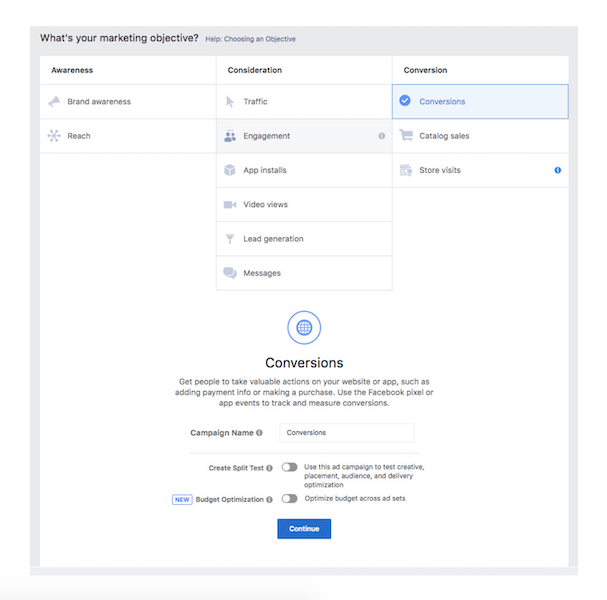
This ad objective helps you:
- Grow sales by getting people to complete transactions on your website
- Prompt an action like adding an item to a shopping cart
- Increase traffic by encouraging people to visit your post-click landing page
How to set them up
Getting started
When optimizing for conversions, Facebook recommends getting about 50 optimization events within your conversion window per week.
Note: These 50 optimization events must be attributable to your ads. If they don’t result from someone seeing/clicking (depending on your conversion window) one of your ads — or if they happen outside your conversion window — then they don’t count towards the 50.
Also, simply selecting the conversions marketing objective doesn’t mean your ad set’s delivery will be optimized for conversions. You have to choose a specific conversion optimization event from the “Conversions” section of ad set creation:
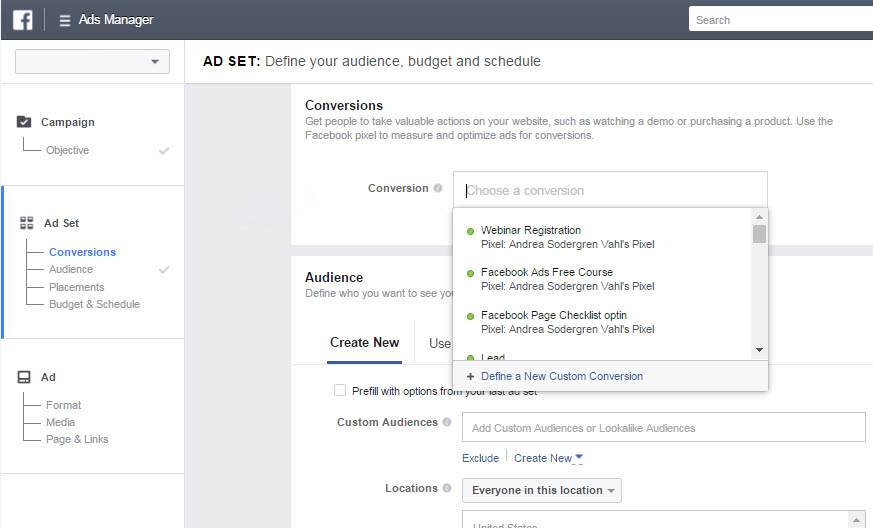
You also need to make sure Optimization for Ad Delivery is set to “Conversions:”
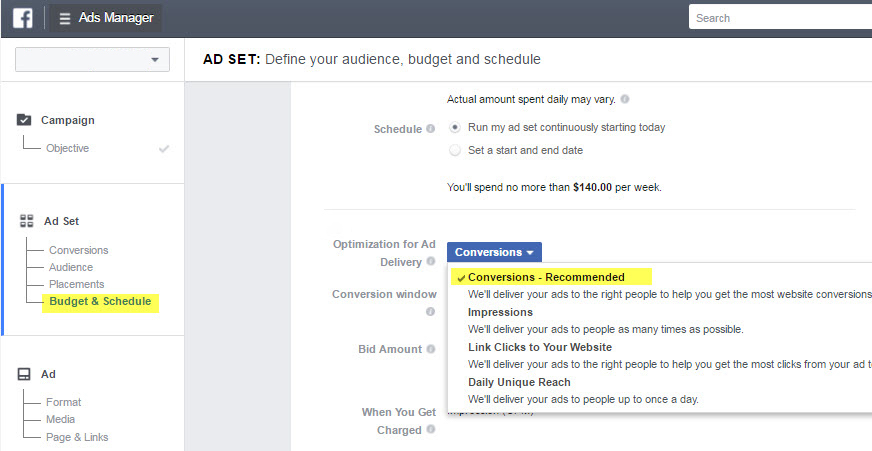
Selecting the right conversion
To help you choose the right conversion strategy, check your Meta Pixel events. Your approach to using conversion ads (and if you should even be using them at all) should be based on how much activity your website receives, which is determined by how many pixel conversion events occurred on your website in the last month.
Here are some benchmark numbers to give you context around whether or not website conversion ads are right for your business:
- Less than 500 pixel events monthly — build up more data and an online customer base before you start using conversion optimization
- 500-10,000 pixel events monthly — start experimenting with conversion optimization and intent-based targeting
- More than 10,000 pixel events monthly — make conversion optimization the focal point of your advertising strategy
Note: The number of pixel events is a measure of all website activity, not just the activity driven by Facebook ads.
Here are some conversion options Facebook recommends when creating your ad set and optimizing through your pixel:
- Landing page views: This conversion option drives higher quality traffic than link clicks, because a landing page view is only tracked when your page loads. Conversely, it still counts as a link click when someone clicks but then closes the page before it loads, which provides you with lower-quality traffic.
- Purchases: It may be tempting to jump right to optimizing for purchases, since is the ultimate goal for many businesses. However, purchases are the rarest type of conversion, especially when just starting.
- Page views: This occurs more frequently than a purchase, so Facebook is much more likely to consistently generate that result.
- Automatic placement: This allows Facebook to find conversion opportunities across the entire Facebook family of apps and services, increasing the number of people you reach and controlling costs.
Creating your target audience
Facebook recommends setting up the following ad targeting methods with ads manager:
- Custom Audiences — You can either upload a data file with a list of your existing customers for Facebook to show your ads to (the easiest way to reach to your existing customers), or you can create a Website Custom Audience comprised of website visitors (so you don’t have to keep uploading new files).
- Demographic targeting — This is especially useful if you don’t have an email list or enough website traffic for retargeting with a Custom Audience. Keep in mind, if your demographics are too specific, your audience may be too small to find any results. Too broad and you may end up with a lot of meaningless results.
- Detailed targeting — This includes targeting Facebook users based on more than just their demographic information (e.g., interests, social media activity, etc.), which is generally more effective for conversion optimization. Combined with targeting expansion, detailed targeting enables your ads to show to people who fall outside your detailed targeting criteria if Facebook predicts driving conversions more this way.
- Cross-border targeting: If your products can be used or shipped globally, there are worldwide and regional targeting options to expand your Facebook ad campaign reach.
Setting up your bid strategy
When adding the conversion optimization objective to your Facebook ads, you may want to adjust your bid strategy. Since conversion results tend to be closely in line with your ultimate business outcome, you’re better able to assign a value to them.
By giving Facebook’s delivery system this value in the form of a target cost or bid cap, the system can further refine the types of results it generates to meet your goals:
- A target cost tells the system to bid for results with an average cost as close to your target as possible. So in this case, set the average amount you want to pay, or can afford to pay.
- A bid cap sets a maximum amount Facebook will bid for you. In this case, bids are not the same as what a result costs, so you may end up paying less than your bid in many cases. That said, consider setting your bid cap at the maximum amount you’d be willing to pay for any given conversion.
If you use a target cost or bid cap, you need to figure out what amount to set. Although that amount will be different for everyone, it’s best to start by determining: What is a conversion within your conversion window worth to you, whether on average (cost target) or at most (bid cap)?
Note: To answer this, consider lifetime value too (for instance, if you get a new customer to purchase, that could lead to future purchases). Start with this number and raise it if needed.
Understanding your results
The only way to increase conversions is to analyze them correctly so that you can make the necessary adjustments.
Although this isn’t a comprehensive list — and metrics will vary based on which pixel code you’re tracking — you can use the following metrics under their corresponding category as a starting point when conversion tracking:
Metrics for cost per conversion:
- Cost per checkout initiated
- Cost per add to cart
- Cost per lead
- Cost per app install
- Cost per purchase
Metrics for total value of conversions:
Note: These metrics refer to conversions for a website (using a pixel) or mobile app (using Facebook SDK).
If Conversion ads aren’t an option…
Conversions vs. link clicks
Conversion optimization isn’t always an option if you can’t place a pixel on the post-click website or thank you page. For example, it may not be possible if you’re sending people to:
- Purchase your product on Amazon
- Sign up for an event through a 3rd party event signup page
- Any site other than your own
In any of these cases, you’ll have to optimize your ad for link clicks instead of conversion event:
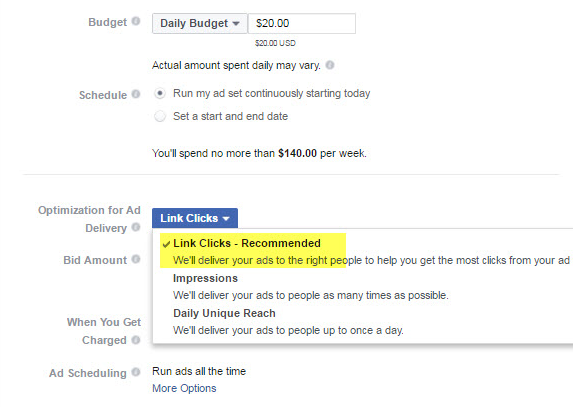
With this selection, Facebook will show your ad to people within your original targeting demographics who are ALSO more likely to click links.
Conversion ads vs. lead generation ads
If you’re unable to set up the Meta pixel, or you’re giving away something for free, you can use Lead ads as an alternative to conversion ads. The main difference between Facebook conversion ads and lead generation ads is that lead ads don’t send prospects to a dedicated post-click page as conversion ads do — so you may not see as many conversions. However, you can still track conversions from the ad.
Connect your conversion ad to a relevant post-click landing page
No matter what you’re offering or what your conversion event is, it’s important to always link your Facebook campaign to a post-click landing page because that’s where the ultimate conversion happens.
To see how Instapage can help you create relevant post-click landing pages at scale to improve your conversion rates even more, Instapage 14-day free trial today.

Try the world's most advanced landing page platform with a risk-free trial.
